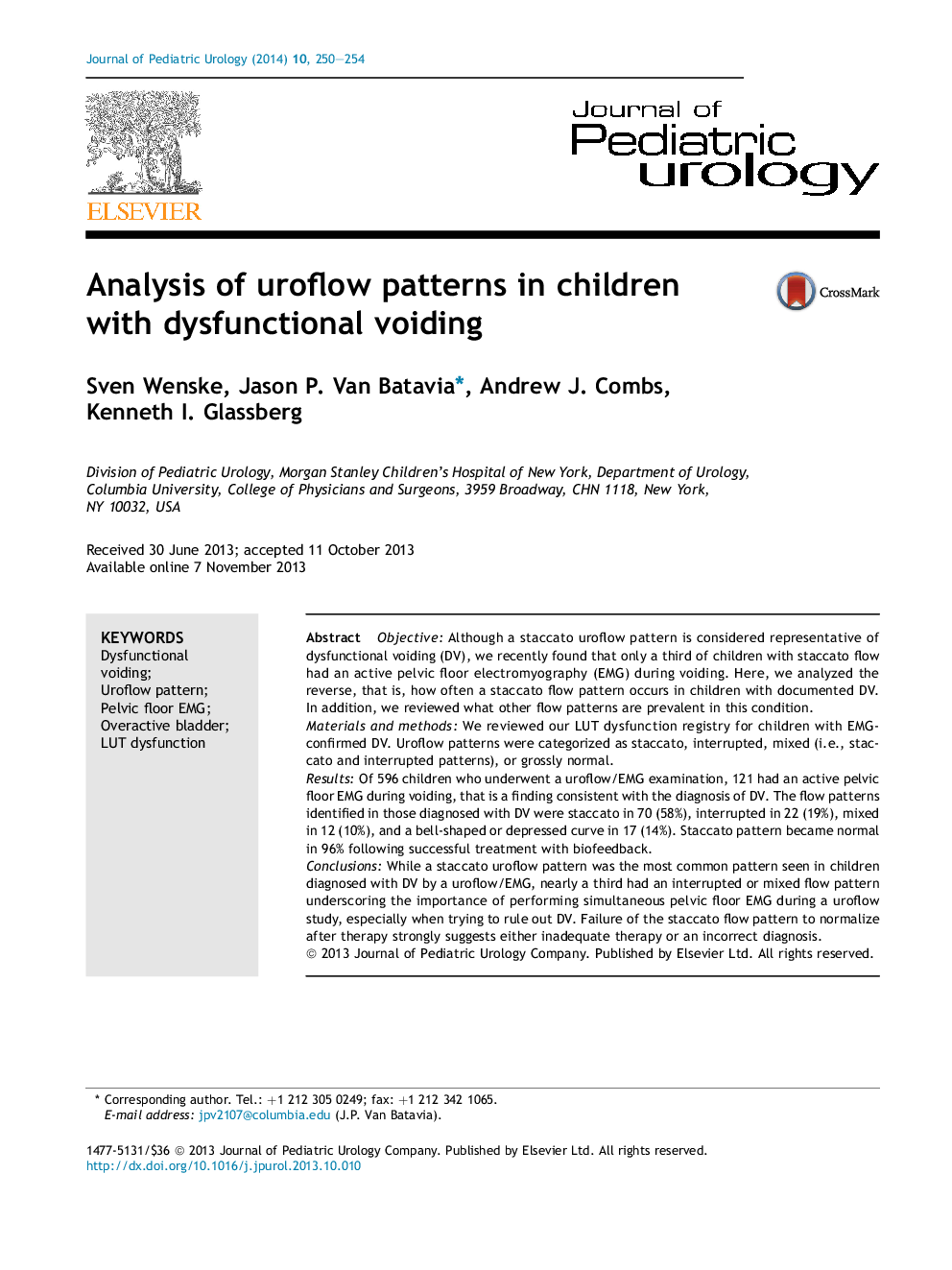| کد مقاله | کد نشریه | سال انتشار | مقاله انگلیسی | نسخه تمام متن |
|---|---|---|---|---|
| 4162750 | 1274289 | 2014 | 5 صفحه PDF | دانلود رایگان |
ObjectiveAlthough a staccato uroflow pattern is considered representative of dysfunctional voiding (DV), we recently found that only a third of children with staccato flow had an active pelvic floor electromyography (EMG) during voiding. Here, we analyzed the reverse, that is, how often a staccato flow pattern occurs in children with documented DV. In addition, we reviewed what other flow patterns are prevalent in this condition.Materials and methodsWe reviewed our LUT dysfunction registry for children with EMG-confirmed DV. Uroflow patterns were categorized as staccato, interrupted, mixed (i.e., staccato and interrupted patterns), or grossly normal.ResultsOf 596 children who underwent a uroflow/EMG examination, 121 had an active pelvic floor EMG during voiding, that is a finding consistent with the diagnosis of DV. The flow patterns identified in those diagnosed with DV were staccato in 70 (58%), interrupted in 22 (19%), mixed in 12 (10%), and a bell-shaped or depressed curve in 17 (14%). Staccato pattern became normal in 96% following successful treatment with biofeedback.ConclusionsWhile a staccato uroflow pattern was the most common pattern seen in children diagnosed with DV by a uroflow/EMG, nearly a third had an interrupted or mixed flow pattern underscoring the importance of performing simultaneous pelvic floor EMG during a uroflow study, especially when trying to rule out DV. Failure of the staccato flow pattern to normalize after therapy strongly suggests either inadequate therapy or an incorrect diagnosis.
Journal: Journal of Pediatric Urology - Volume 10, Issue 2, April 2014, Pages 250–254
